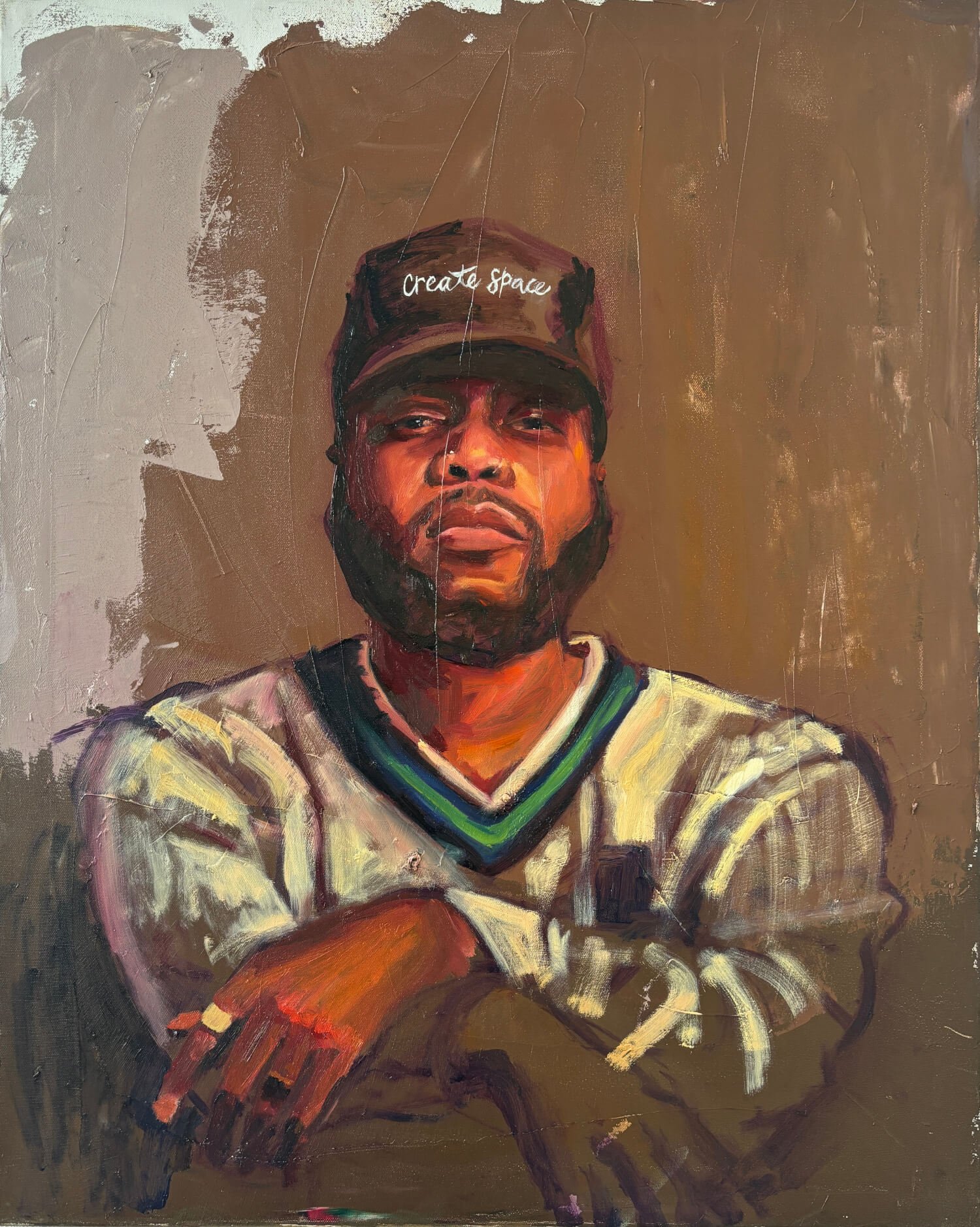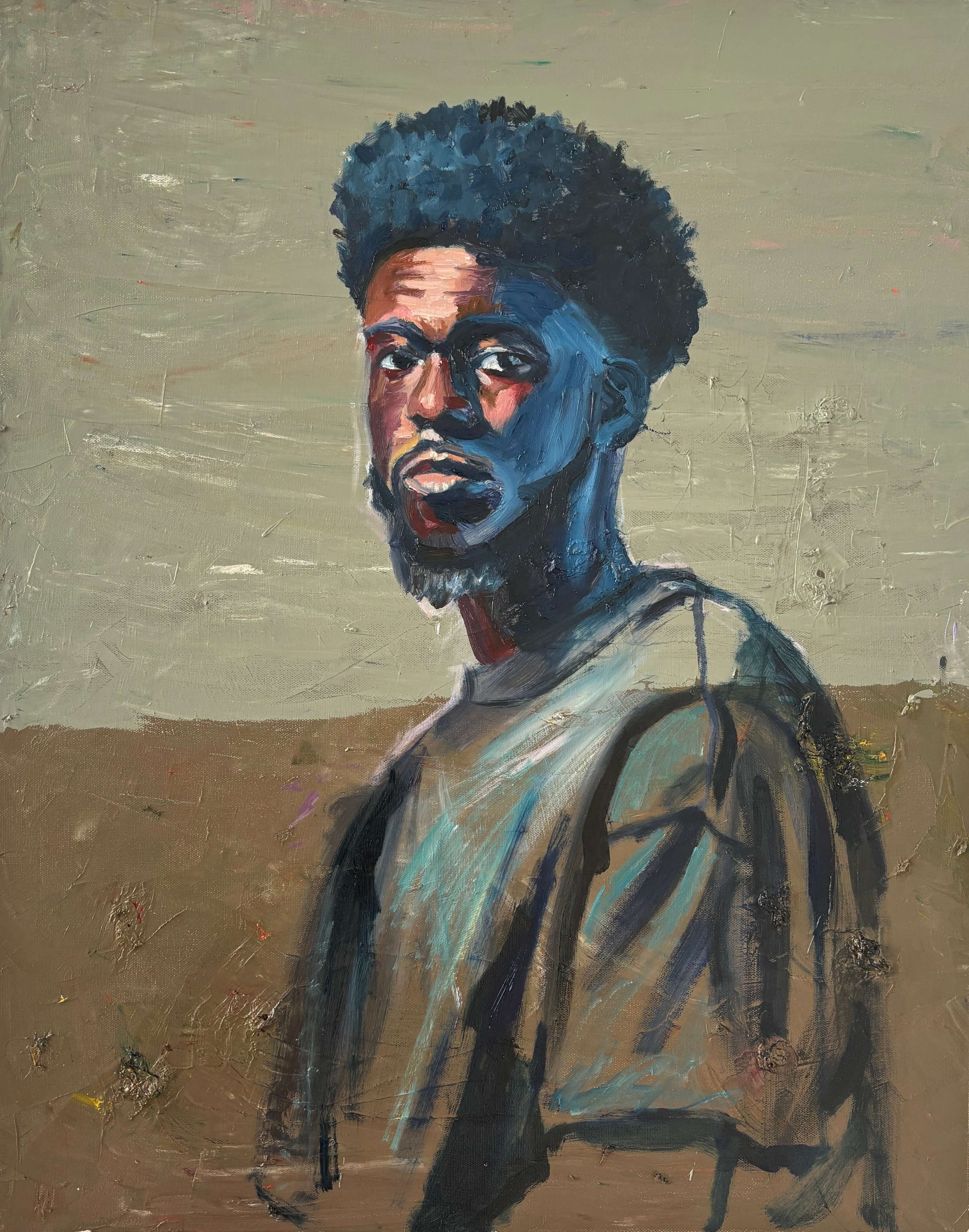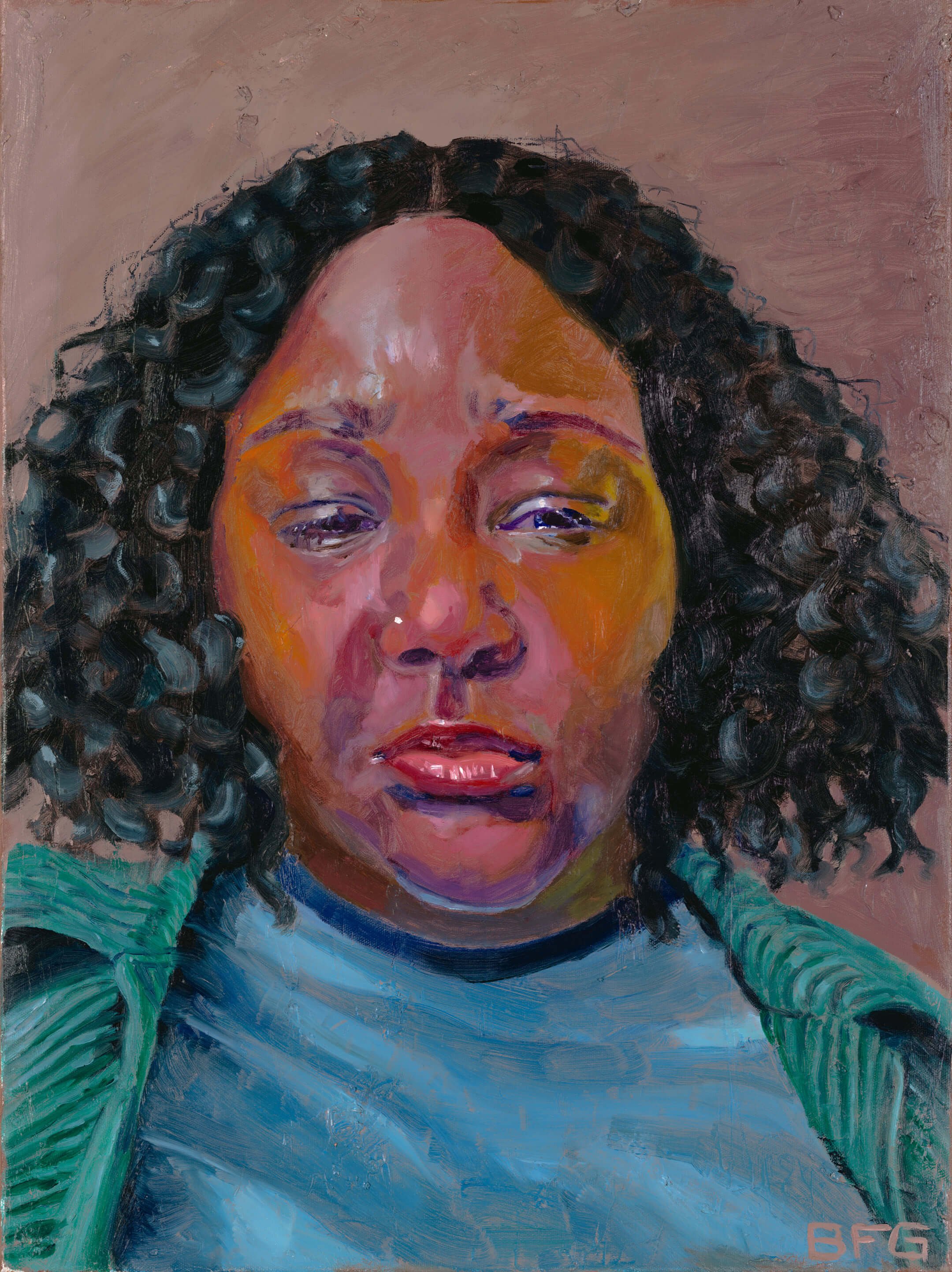Bree Gilliam
AQ is our series of hardcover catalogs celebrating extraordinary women artists. Available on Amazon. Visit the AQ Catalog Webpage to learn more.
AQ Volume V artist Bree Gilliam is a painter from Buffalo, New York. She attended SUNY Buffalo State University, receiving a B.F.A. in painting and a minor in art therapy in 2022. She is best known for her figurative oil paintings, which contain expressive and loose brushstrokes influenced by masters such as John Singer Sargent and contemporary artist Jordan Casteel. She is deeply interested in the social issues plaguing society as well as celebrating people of color who inspire change in their communities. Gilliam believes that her responsibility is to depict the perspective of marginalized people, give a voice to the voiceless, and empower her community.
Her work has been exhibited in several exhibitions around New York State, including Hallwalls Contemporary Art Center’s Amid/In WNY 2024, Burchfield Penney Art Center’s Sharing Our View: 25th Anniversary, a solo exhibition entitled INSPIRED at Buffalo Arts Studio, and a group exhibition with Art Groove Collective in SoHo, NYC. She is also an independent contract artist with Buffalo AKG Art Museum.
Gilliam has been featured in Hyperallergic, Canvas Rebel, Buffalo Spree Magazine, Buffalo Rising, and WBFO NPR’s What’s Next? Podcast.
Bree attended a residency at The C. Stuart and Jane H. Hunt Art Gallery and has received a Summer Undergraduate Research Fellowship from Buffalo State University. Gilliam has also received over ten academic awards during her time at Buffalo State University.
Bree hopes to continue sparking uncomfortable yet crucial conversations with her work. She will continue to make new work out of her studio in Buffalo, NY.
www.breegilliam.com
What inspired you to become an artist, and how did you decide to commit to this path?
In January 2018, while in high school, I found myself reflecting on the events surrounding the Charlottesville rally four months earlier. The display of hate deeply troubled me, which led me to create a triptych painting that explored the varied perspectives on injustice within American society. This marked a significant shift in my artistic journey. Before this piece, my artwork had not included social or political themes.
Through this painting, titled See No… Hear No… Speak No Injustice, I channeled my feelings of anger and frustration into powerful imagery. When I displayed the work at my predominantly White school, it sparked meaningful conversations among students from different backgrounds and political viewpoints. Many expressed how the piece provided an understanding of the experiences of marginalized individuals.
The discussions I witnessed inspired me to pursue a major in painting at Buffalo State University, where I continued to create art that tells the stories of those who are faced with injustice and feel that their experiences are often overlooked.
Could you share the story or concept behind your recent work?
My painting, Smeared, draws inspiration from Jacques Guillaume Lucien Amans’ family portrait, Bélizaire and the Frey Children, which the MoMA acquired. During the restoration process, it was discovered that a mixed-race enslaved boy had been covered beneath the layers of paint. This revelation prompted me to reflect on the ongoing push for the exclusion of Black history in education, which can sometimes lead to the erasure of important narratives. In response, I sought to create a piece representing the perspective of the unnamed mixed-race enslaved boy depicted in Amans' 1837 painting. In my artwork, a Black male figure emerges into the background, screaming to assert his existence while being blended into the surrounding landscape.
What was the most challenging part of your path so far? How are you navigating this obstacle?
It has been challenging to balance studio time with other responsibilities. However, I am beginning to manage my time more efficiently and am learning to prioritize my work days by designating specific days to be in the studio.
What role does experimentation and exploration play in your artistic practice?
Experimentation and exploration are essential to being an artist. I have so many paintings dedicated to exploring different concepts and techniques. I may never display these paintings in a gallery, but they are a reference to the potential start of a new area of focus for me. When I have run out of ideas, motivation, or creativity, I try to explore mediums other than what I typically use or have never tried. This exploration gives me a break from the monotony and refreshes my creativity.
Do you have any start or stop rituals before creating?
I have a preference for smoother textures over the roughness of canvas. During my time at Buffalo State University, I adopted a helpful ritual from Professor Lin Xia Jiang. After completing a painting session, I carefully mix the remaining paint on my palette and spread it on a blank canvas. This practice allows me to repurpose the paint from my previous works to prime each new canvas, adding an additional layer of meaning to all my pieces.
What message do you hope your art conveys to the world?
I hope my art reflects the current state of the world and the United States through the lens of marginalized voices. My goal is for the images I create to inspire introspection and encourage viewers to examine their own biases. If someone feels uncomfortable after viewing my work, I want them to ask themselves, “Why does this make me uncomfortable?” Along with this internal dialogue, I hope they can discuss the content with friends and loved ones in a social context.
Share a mantra or favorite quote that keeps you going.
My favorite Mark Twain quote is, “Why not go out on a limb? That's where the fruit is!” The quote motivates me when I create a piece that requires a degree of vulnerability, which I often do. Being open to expressing personal experiences is always fruitful because, in my experience, I will resonate with someone.











